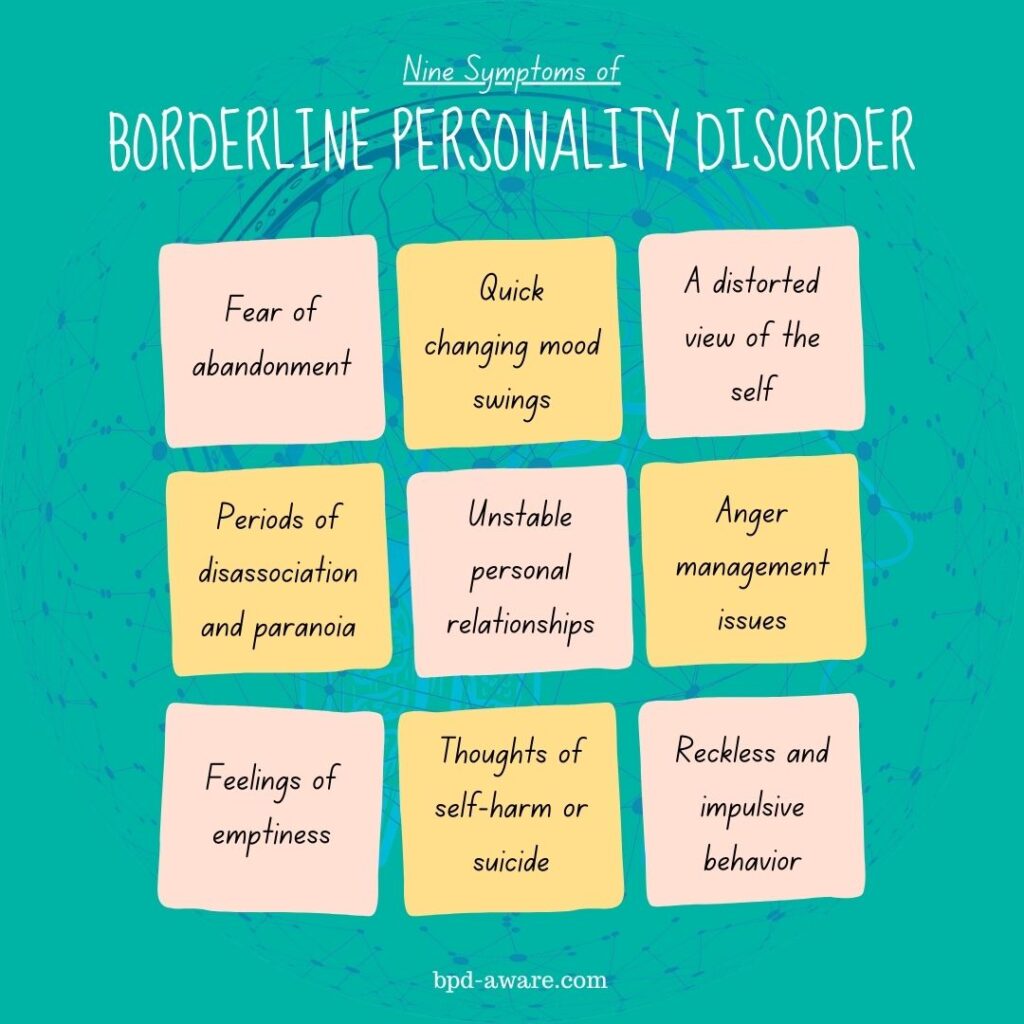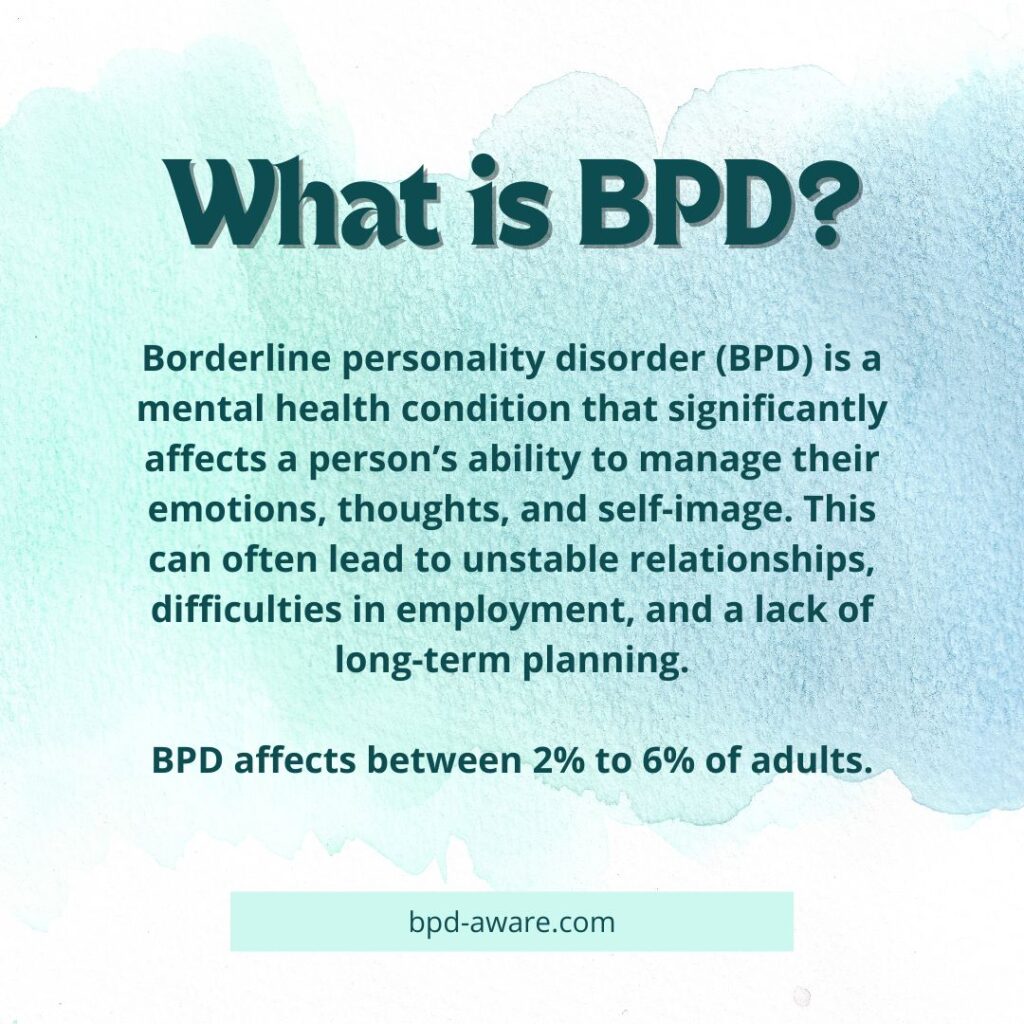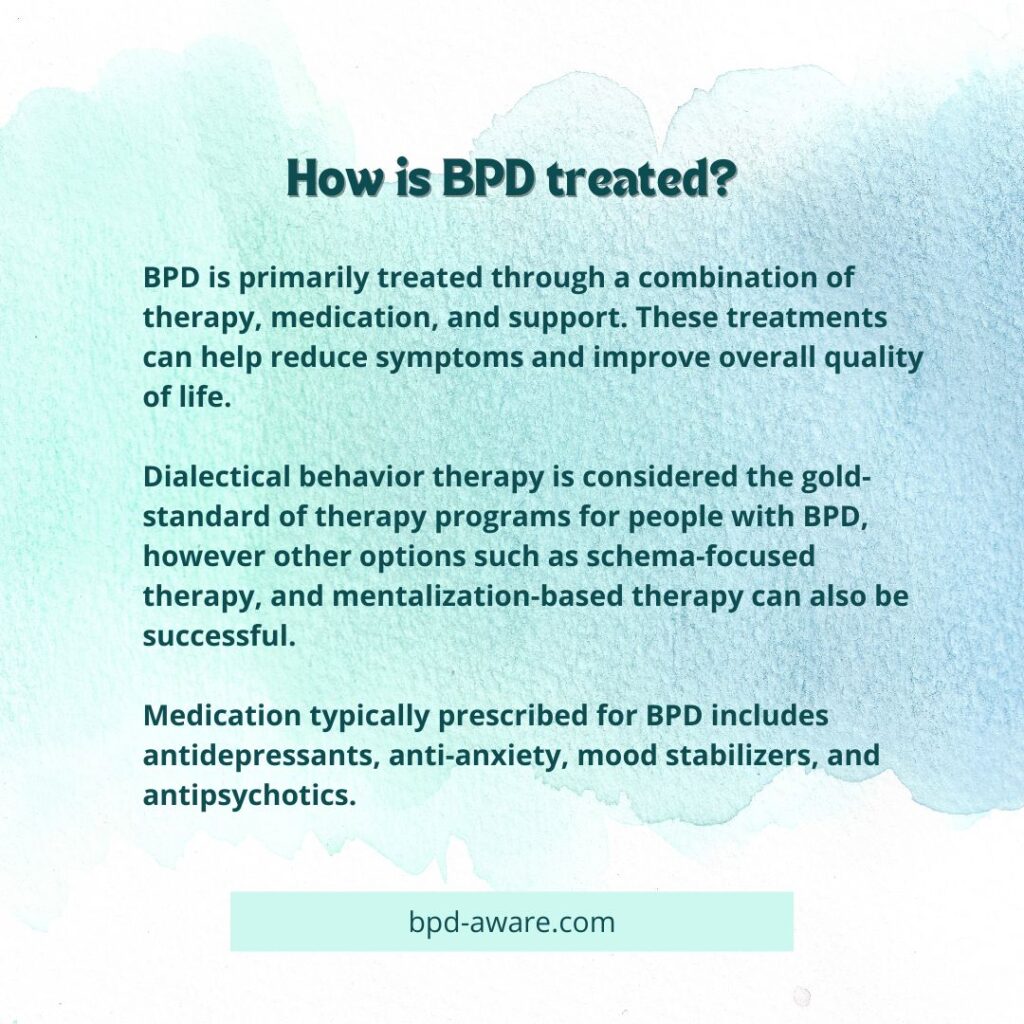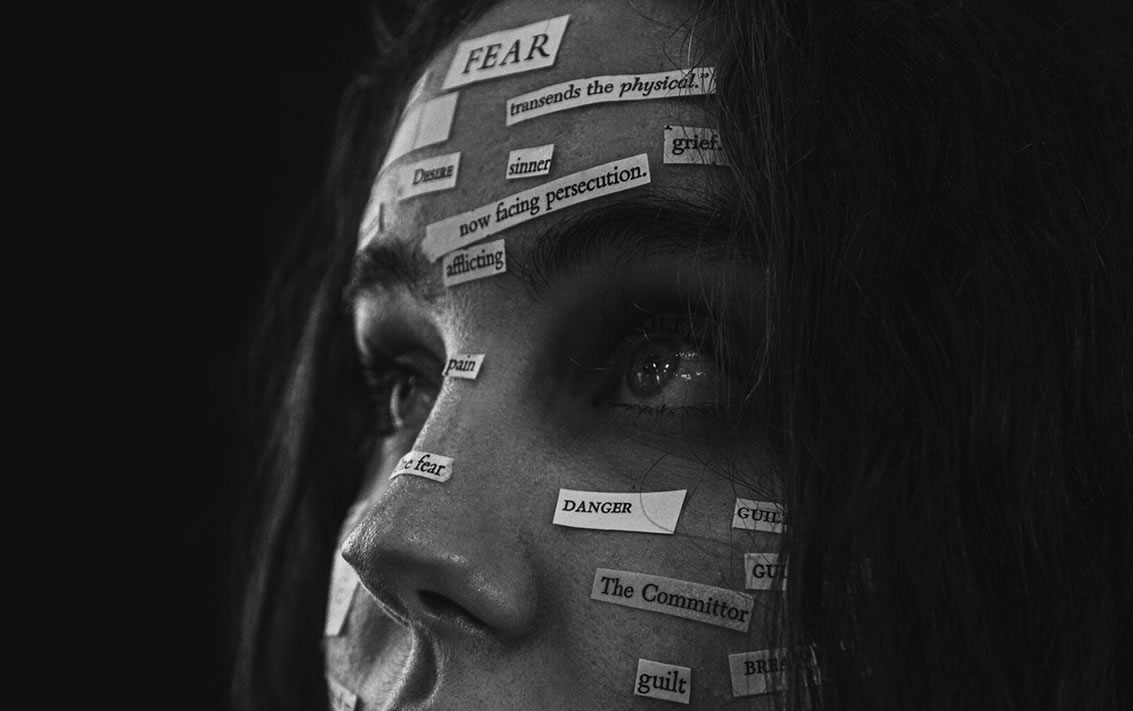Borderline Personality Disorder (BPD) is a mental health condition that significantly affects a person’s ability to manage their emotions, thoughts, and self-image. This can often lead to unstable relationships, difficulties in employment, and a lack of long-term planning.
Those affected by Borderline Personality Disorder engage in self-harm and self-destructive behavior at higher rates than those without BPD or similar disorders. This includes behavior such as cutting, alcohol or drug abuse, eating disorders, and suicide attempts.
Borderline Personality Disorder affects between 2% to 6% of adults and is more commonly reported in women than men. It’s important to note, however, that men tend to seek help for mental health issues less often than women – which means that it’s likely that BPD in men is comparatively under-reported.
The Nine Signs and Symptoms of Borderline Personality Disorder
There are nine typical signs/symptoms that someone may have Borderline Personality Disorder. To be diagnosed with BPD, someone must experience at least five of the following:
- An intense fear of abandonment or rejection. This can lead to a BPD sufferer going to extreme lengths to avoid abandonment or rejection.
- Unstable interpersonal relationships. Someone with borderline personality disorder may see a friend as a “perfect angel” one day and swing wildly to thinking of them as an “abusive devil” the next.
- Engaging in reckless, impulsive behavior. This can take the form of gambling, dangerous driving, careless driving, unsafe sex, binge eating/drinking, and alcohol or drug abuse.
- Wild mood swings and an inability to regulate emotional responses.
- A distorted self-view that can include rapidly changing goals and life values.
- Short periods of paranoia and dissociation that are brought on by heightened stress.
- Intense anger that is difficult to control. This can lead to acts of verbal and physical aggression.
- Continual feelings of emptiness.
- Reoccurring thoughts of self-harm or suicide.

What Causes Borderline Personality Disorder?
There is no known exact cause of Borderline Personality Disorder. Like many other personality disorders, the causes of BPD are complex, and there is no definitive answer.
Genetics: Studies have shown that genetics can play a role in any personality disorder. If a parent has a personality disorder, there is always a chance they may pass it on to their child. An exact percentage is impossible to define, although one study placed the risk of a parent passing on their BDP between 37% and 69%. The difference between a 1 out of 3 chance and a 2 out of 3 chance is quite a wide range, and further investigation into the hereditary nature of BPD still needs to be done.
Brain abnormalities and neurochemistry: Research has found that people with borderline personality often can have structural and functional differences in the physical makeup of their brain, particularly in the areas associated with impulse control and emotional regulation. Whether these differences cause BPD or are caused by BPD is not yet known. Gaining that knowledge would be a massive step in better understanding borderline personality disorder.
Environmental factors: Traumatic events during childhood, such as hardship, neglect, emotional, physical, or sexual abuse, and abandonment, have shown a strong correlation with the development of borderline personality disorder. However, there is no proof at this time whether this is a direct cause of BPD or whether it’s evidence of genetic factors. Click here to read more about the link between BPD and childhood trauma.
The Four Subtypes of Borderline Personality Disorder
There are four commonly accepted types of Borderline Personality Disorder. Someone who suffers from BPD may experience more than one type simultaneously or shift between types at various stages of their lives.
Click the links below to find out more about each type of Borderline Personality Disorder:
Treatment of Borderline Personality Disorder
Dialectical Behavioral Therapy (DBT) is the most successful form of psychotherapy used to treat BPD. It was designed for people with BPD and has a success rate as high as 77%. DBT should generally be the first form of therapy someone with BPD tries. Another form of psychotherapy that has been useful for those with BPD is Schema Therapy. Schema Therapy focuses on the maladaptive behaviors and their causes and, ultimately, how one can think and act more healthily. Other popular alternatives include Transference-Focused Psychotherapy and Mentalization-Based Therapy.
Medication for Borderline Personality Disorder
While no medication is explicitly designed to treat BPD, several kinds of medication can help reduce specific symptoms.
Mood stabilizers/anticonvulsants can help to reduce mood volatility and impulsive behavior.
Antidepressants can help to alleviate low moods and anxiety. Anti-anxiety medication can also aid in reducing anxiety and panic disorders.
Antipsychotics can reduce suicidal/self-injurious thoughts and behavior as well as anger and psychosis.
Omega-3 fatty oils have been found to be beneficial to people with BPD.
It’s not unusual for someone with BPD to be on one or more types of medication. Finding the right combination of drugs for the individual is typically a case of trial and error until the right combination is found.
While medication can help cope with BPD and even aid recovery, it’s not seen as a cure or a replacement for therapy.
Click here to read more about medication for BPD.




Sources, Resources, and Further Reading
- Borderline personality disorder: Borderline personality disorder
- Borderline personality disorder (BPD): https://www.mind.org.uk/information-support/types-of-mental-health-problems/borderline-personality-disorder-bpd/about-bpd/
- Borderline Personality Disorder: Symptoms and Treatment: https://rethink.org/advice-and-information/about-mental-illness/mental-health-conditions/borderline-personality-disorder-bpd/
- Why Does Borderline Personality Disorder Hurt So Much?: https://clearviewtreatment.com/resources/blog/why-does-borderline-personality-disorder-hurt-so-much/
















